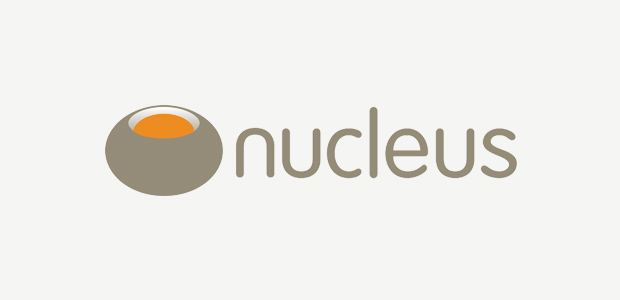Oil: A new framework?
The recent unexpected announcement by OPEC on a framework designed to limit crude output has substantially changed the market dynamics in the short term for the price of oil. What was previously an uncertain environment, with no OPEC guidance, has now changed to offering a glimpse of price stability amidst a more orderly background. Ultimately the recent commitment will be put to the test when it comes to defining a binding agreement ahead of the next official meeting at the end of November.
This move by OPEC represents a change in the approach that previously favoured targeting market share at the expense of the oil price and total revenue. A combination of factors, including the prolonged rebound from January low for WTI futures of $26.55, has led to greater confidence by OPEC in its ability to manage the oil price. However, there remain a number of challenges to making the recent intentions produce credible results.
As recently as August, OPEC had been producing at 33.69 mb/d, which represents record rates compared to the past five years.). In this context it is easy to see how OPEC is positioning the new proposal of a reduction to between 32.5mb/d to 33mb/d as a strategic shift. At the lower bound this would represent a modest decrease of 3.5% in OPEC’s supply of crude, but it is not the magnitude of the decrease that is important, more the direction and intention that has been signalled to the market. This places even more emphasis on the conclusion of a firm agreement at the next scheduled OPEC meeting in Vienna on the 30 November, which will therefore set the scene for OPEC’s supply schedule for the winter.

Source: Bloomberg, OPEC
In the meantime, the oil price has reacted positively to the news with front month WTI futures recently trading at $48.24, and increase of 7.9% for the month. Brent has also risen to $49.06, a rise of 4.3% on the month. (Source: Bloomberg). Over the past three months, oil has been relatively flat with WTI declining by 0.2% and Brent by 1.2%. Although, realised sixty-day volatility has remained high at close to 40%. This is relatively subdued compared to the particularly elevated levels of around 70% in March.

Source: Bloomberg, OPEC
Whilst news of the shift in OPEC’s stance has laid the foundation for potentially greater price stability compared to the market turmoil when oil was trading below $30 per barrel in January, there remains a lot of uncertainty. Specifically, non-OPEC producers such as Russia may have less of a desire to manage output given domestic economic and budgetary constraints. As prices rise there is also the potential for increased US shale production that may also impact the supply equation. In addition, there is a significant risk, that even after two years of talks, the cartel may yet fail to reach a definitive agreement.
Over the past two years Boost Oil ETCs covering European trading in short and leveraged products have risen dramatically to reach a market leading position. Whilst in 2015, Boost short and leveraged Oil ETCs had a market share in Europe of 54%, the current year has seen this increase to close to 66%. In fact, during the period of highest traded volumes, which was May and June, Boost’s market share was above 70%.
So far, on a year to date basis Boost Oil ETCs, have traded over $6.5bn on exchange and have also seen primary market activity of $2.3bn. These high traded volumes, on both secondary and primary market show the efficiency of the short and leveraged products and helps explain the efficiency that they offer when tactical positions with respect to the oil price.
For those investors looking to gain exposure to commodities whilst reducing portfolio volatility may wish to consider the WisdomTree Enhanced Commodity UCITS ETF (WCOA)
The lower volatility in oil may well be beneficial in the context of broader commodities, where in some indices, such as the Bloomberg Commodity Index, energy represents close to 33% of the index. A more stable commodity pricing environment, led by oil, is likely to encourage investors to consider an increased allocation to broad commodities. In this instance investors are likely to want to gain exposure in an efficient manner and using a strategy that has enhanced and optimised roll yields is likely to prove beneficial for longer-term holders.
OPEC’s announcement is a first step towards a more stable pricing environment for oil, with the commodity remaining an important part of investor sentiment to commodity investing. There is a long way to go until true price stability and supply normalisation has been reached but in the short term investors can Boost short and leverage Oil ETCs to focus on opportunities as they arise.
Investors looking to take advantage of the expected volatility in the oil price may wish to consider
Boost ETCs that cover both long and short exposures to WTI and Brent with a range of leverage factors (1x to 3x). Key products include:
+ Boost WTI Oil 3x Short Daily ETP (3OIS)
+ Boost WTI Oil 3x Leverage Daily ETP (3OIL)
+ Boost Brent Oil 3x Leverage Daily ETP (3BRL)
+ Boost Brent Oil 3x Short Daily ETP (3BRS)
+ Boost WTI Oil 2x Short Daily ETP (2OIS)
+ Boost WTI Oil 2x Leverage Daily ETP (2OIL)
+ Boost WTI Oil 1x Short Daily ETP (OILZ)
+ Boost Brent Oil ETC (BRND)
+ Boost WTI Oil ETC (WTID)
For investment professionals only. This communication has been provided by WisdomTree Europe Ltd which is an appointed representative of Mirabella Advisers LLP which is authorised and regulated by the Financial Conduct Authority. Please view our full disclaimer.
